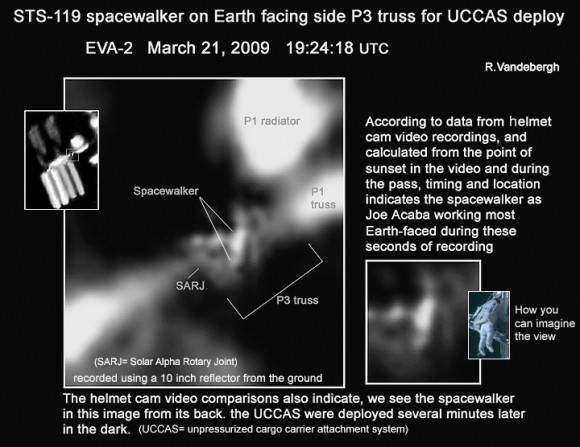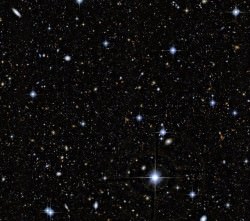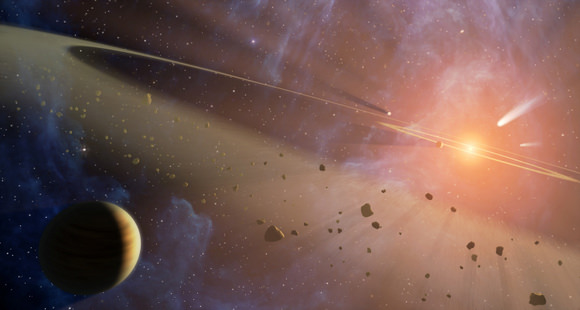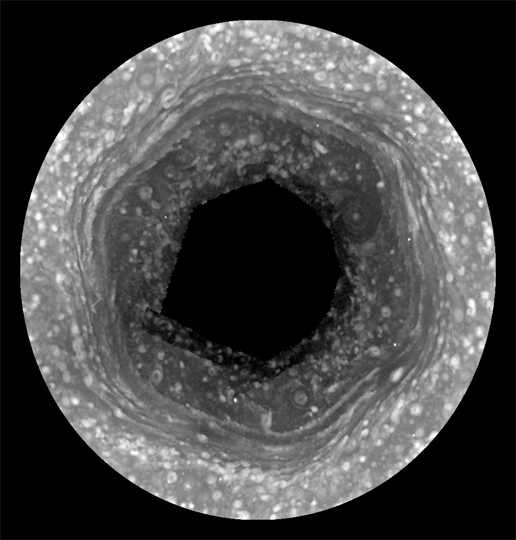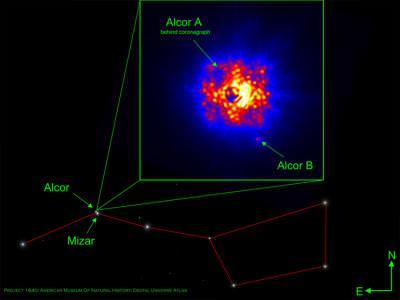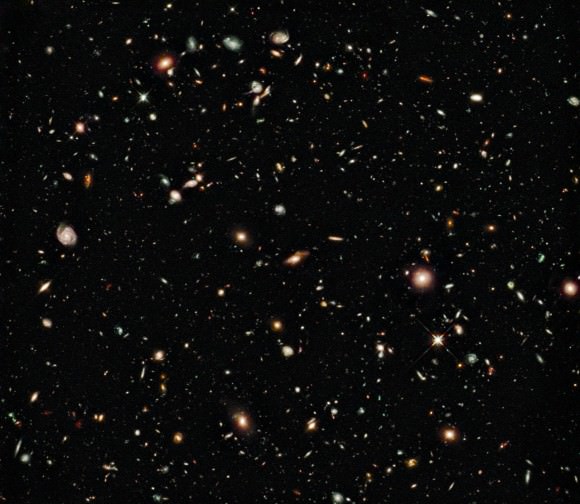Fermi Spies Energetic Blazar Flare
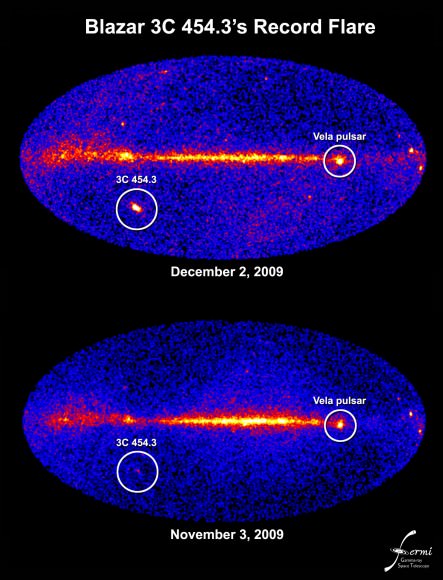
A comparison of the Fermi images from November 3rd and December 2nd of this year, showing the brightening of 3C 454.3. Image Credit: NASA/DOE/Fermi LAT Collaboration
The blazar 3C 454.3, a bright source of gamma rays from a galaxy 7 billion light-years away just got a whole lot brighter. Observations from the Fermi gamma-ray telescope confirm that since September 15th the blazar has flared up considerably, increasing in gamma-ray brightness by about ten times in the from earlier this past summer, making it currently the brightest gamma-ray source in the sky.
3C 454.3 is a blazar, a jet of energetic particles that is caused by the supermassive black hole at the center of a galaxy. Most galaxies are thought to house a supermassive black hole at their center, and as it chomps down matter from the accretion disk that surrounds it, the supermassive black hole can form large jets that stream out light and energy in fantastic proportions. In the case of 3C 454.3, one of these jets is aimed at the Earth, which allows for us to see and study it.(...)
Read the rest of Fermi Spies Energetic Blazar Flare (844 words)
NASA Science News for December 11, 2009
This week, researchers attending the United Nations Climate Change Conference in Copenhagen unveiled a unique web site that gathers and organizes climate data for decision makers, professional scientists and lay people.
FULL STORY at
http://science.nasa.gov/headlines/y2009/11dec_climateonestop.htm?list1035898
Wow! Astronauts on EVA, As Seen From Earth
Ralf Vandebergh's detail of an image he took on March 21, 2009 showing astronauts working outside the ISS. Credit: Ralf Vandebergh
Remember when it was a big deal when amateur astronomers starting imaging the International Space Station as seen from Earth, showing individual modules and other parts of the space station? One of the most proficient astrophotographers in that department has now just upped the game: Ralf Vandebergh has captured images of astronauts working outside the ISS during an EVA. Vandebergh, who lives in The Netherlands, used his 10-inch Newtonian backyard telescope to capture an image of STS-119 astronauts Joe Acaba and Steve Swanson working outside the ISS to install equipment on one of the trusses during the second EVA of the mission on March 21, 2009. Below, enjoy the video Vandebergh created about his extreme zoom-in handiwork.
Nice job Ralf! Check out his website of other telescopic spacecraft image here.
(...)
Read the rest of Wow! Astronauts on EVA, As Seen From Earth (0 words)
Half a Million Galaxies, Yours to Explore
Move over, Hubble Deep Field. The Canada-France-Hawaii Telescope has released a new deep-field image of as many as 500,000 galaxies out to a distance of 7 billion light years. And you can surf the entire image at high resolution with an interactive zoom feature at the CFHT website.
(...)
Read the rest of Half a Million Galaxies, Yours to Explore (246 words)
Earth's Atmosphere Came from Outer Space
A new study finds the gases which formed the Earth's atmosphere – as well as its oceans – did not come from inside the Earth but from comets and meteorites hitting Earth during the Late Heavy Bombardment period. A research team tested volcanic gases to uncover the new evidence. "We found a clear meteorite signature in volcanic gases," said Dr. Greg Holland the project's lead scientist. "From that we now know that the volcanic gases could not have contributed in any significant way to the Earth's atmosphere. Therefore the atmosphere and oceans must have come from somewhere else, possibly from a late bombardment of gas and water rich materials similar to comets."
(...)
Read the rest of Earth's Atmosphere Came from Outer Space (247 words)
Saturn's Hexagon Endures!
This movie from Cassini, made possible only as Saturn's north pole emerged from winter darkness, shows new details of a jet stream that follows a hexagon-shaped path and has long puzzled scientists.
The Cassini spacecraft was able to take another look at one of Saturn's strangest features – a bizarre six-sided cloud structure circling the entire north pole. This structure was hinted at when the Voyager spacecraft first visited the planet nearly 30 years ago, and Cassini was able to take a brief look a few years ago with Cassini's infrared camera. But these latest images provide evidence the hexagon-shaped jet stream is still there, (the north pole has been shrouded in darkness but has now recently emerged into sunlight) and gives scientists the most detail yet to study the intriguing hexagon shape crowning the planet.
(...)
Read the rest of Saturn's Hexagon Endures! (572 words)
Extra Star Found in the Big Dipper
The handle of the Big Dipper just got stronger! Astronomers have found an additional star located in the Dipper's gripper that is invisible to the unaided eye. Alcor, one of the stars that makes the bend in the Big Dipper's handle has a smaller red dwarf companion orbiting it. Now known as "Alcor B," the star was found with an innovative technique called "common parallactic motion," and was found by members of Project 1640, an international collaborative team that gives a nod to the insight of Galileo Gallilei.
(...)
Read the rest of Extra Star Found in the Big Dipper (601 words)
Very First Image of a Very Hot Star
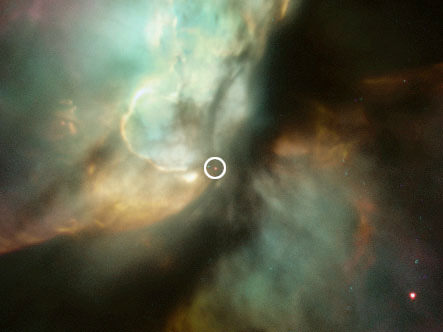
No, this article is not about Johnny Depp or Angelina Jolie. They may be hot stars, but in comparison to the star at the center of the Bug Nebula, pictured left, they've got nothin'. The first image of the star at the center of the Bug Nebula (NGC 6302) has been taken by a team of astronomers at the Jodrell Bank Centre for Astrophysics, using the newly refurbished Hubble Space Telescope. This star, one of the hottest in the galaxy, has a temperature of about 200,000 Kelvin – 33 times hotter than the Sun – and is at the center of one of the most beautiful planetary nebula in the galaxy.(...)
Read the rest of Very First Image of a Very Hot Star (627 words)
Hubble Takes a New "Deep Field" Image with Wide Field Camera 3
Hubble's latest image is another stunner — and just look at all the galaxies! Hubble has produced a new version of the Ultra Deep Field, this time in near-infrared light and taken with the newly installed Wide Field Camera 3. This is the deepest image yet of the Universe in near-infrared, and so the faintest and reddest objects in the image are likely the oldest galaxies ever identified, and they likely formed only 600–900 million years after the Big Bang. This image was taken in the same region as the visible Ultra Deep Field in 2004, but this new deep view at longer wavelengths provides insights into how galaxies grew in their formative years early in the Universe's history.
(...)
Read the rest of Hubble Takes a New "Deep Field" Image with Wide Field Camera 3 (500 words)
New Findings Say Mars Methane Comes from Life or Water — or Both
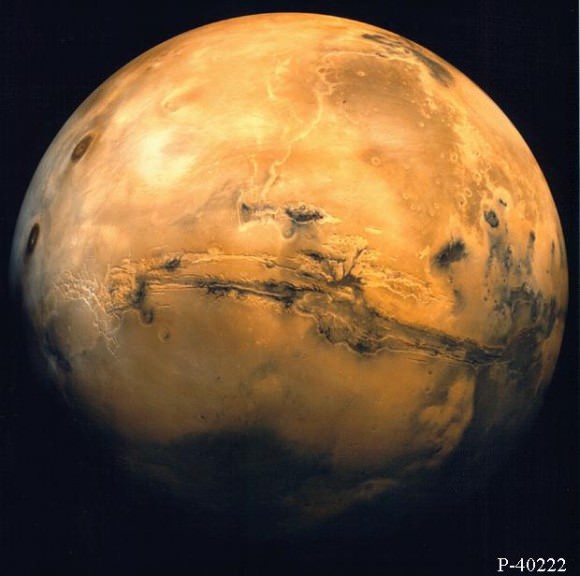
A new paper that will be published Wednesday rules out the possibility that methane is delivered to Mars by meteorites, boosting the idea that the short-lived gas perhaps could be generated by either life or water, or maybe even both. Microorganisms living in the Martian soil could be producing methane gas as a by-product of their metabolic processes, or methane might be created as a result of reactions between volcanic rock and water. Either way, the prospect is exciting.
(...)
Read the rest of New Findings Say Mars Methane Comes from Life or Water — or Both (542 words)
Exoplanet Not Really There?

This artist's concept shows the smallest star known to host a planet. Image credit: NASA/JPL-Caltech
In May 2009, astronomers were jubilant: finally, an extra solar planet had been found by using the method of astrometry. That's great, except, they may not have found a planet after all. Researchers from JPL reported they found a Jupiter-like planet around a star smaller than our sun. But follow-up observations of the star VB10 are coming up empty. "The planet is not there," said Jacob Bean from the Georg-August University in Gottingen, Germany, who used a different and more successful approach to look for exoplanets, radial velocity.
(...)
Read the rest of Exoplanet Not Really There? (422 words)
MRO Comes Out of
Safe Mode 
Artist impression of MRO. Image credit: NASA/JPL
The latest word on the Mars Reconnaissance Orbiter is that the spacecraft has successfully come out of safe mode. The various instruments, including the HiRISE camera are still "safed" at this point, and engineers are waiting for acquisition of signal to confirm mapping orientation. MRO spontaneously rebooted its computer on Aug. 26, and since this was the fourth time this type of event had occurred, flight engineers decided to keep the spacecraft in safe mode, and have been working to figure out possible root causes, as well as repercussions if these events were to continue to happen. Several protective files were uploaded to MRO in late November, with hopes of returning the orbiter to its regularly scheduled research and relay activities. Once engineers check out of all the science instruments, normal science operations may resume next week.
(...)
Read the rest of MRO Comes Out of Safe Mode (248 words)
Subject: The 2009 Geminid Meteor Shower
NASA Science News for December 8, 2009
The annual Geminid meteor shower has been intensifying, and researchers say 2009 could be the best year yet. This year's display peaks on Dec. 13th and 14th.
FULL STORY at
http://science.nasa.gov/headlines/y2009/08dec_geminids.htm?list1035898
Red Giant Brightness Variations Still Mysterious

Like everything else in the Universe, stars get old. As they become older, stars like our own Sun "puff up", becoming red giants for a period before finally settling down into white dwarfs. During this late period of their stellar lives, about 30% of low-mass red giants exhibit a curious variability in their brightness that remains unexplained to this day. A new survey of these types of red giants rules out most of the current explanations put forth, making it necessary to find a new theory for their behavior.(...)
Read the rest of Red Giant Brightness Variations Still Mysterious (662 words)
First Look at SpaceShipTwo
Virgin Galactic will unveil SpaceShipTwo (SS2), Monday night, but they did sneak out a few photos prior to the event. SS2 will be the world's first commercial manned spaceship, with room for several passengers to move (and fly!) around during suborbital flights. "This is truly a momentous day. The team has created not only a world first but also a work of art," said Sir Richard Branson, Virgin Galactic founder. Burt Rutan, the designer of SpaceShipOne which won the Ansari X PRIZE in 2004 for completing the world’s first manned private space flights said, "All of us at Scaled Composites are tremendously excited by the capabilities of both the mothership and SS2."
(...)
Read the rest of First Look at SpaceShipTwo (256 words)
